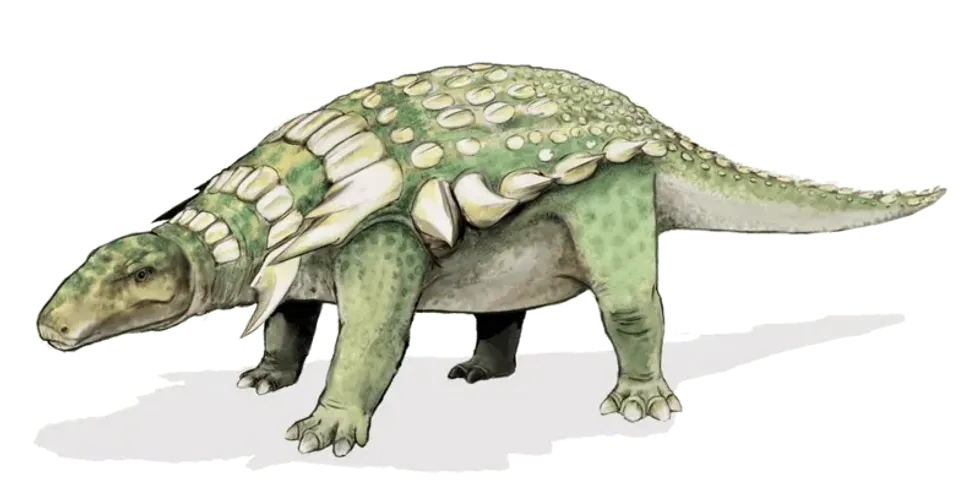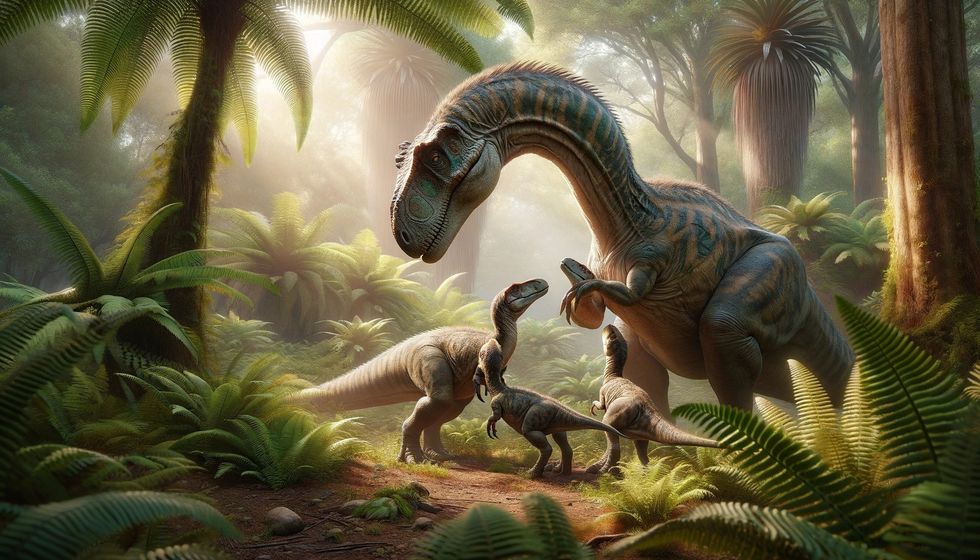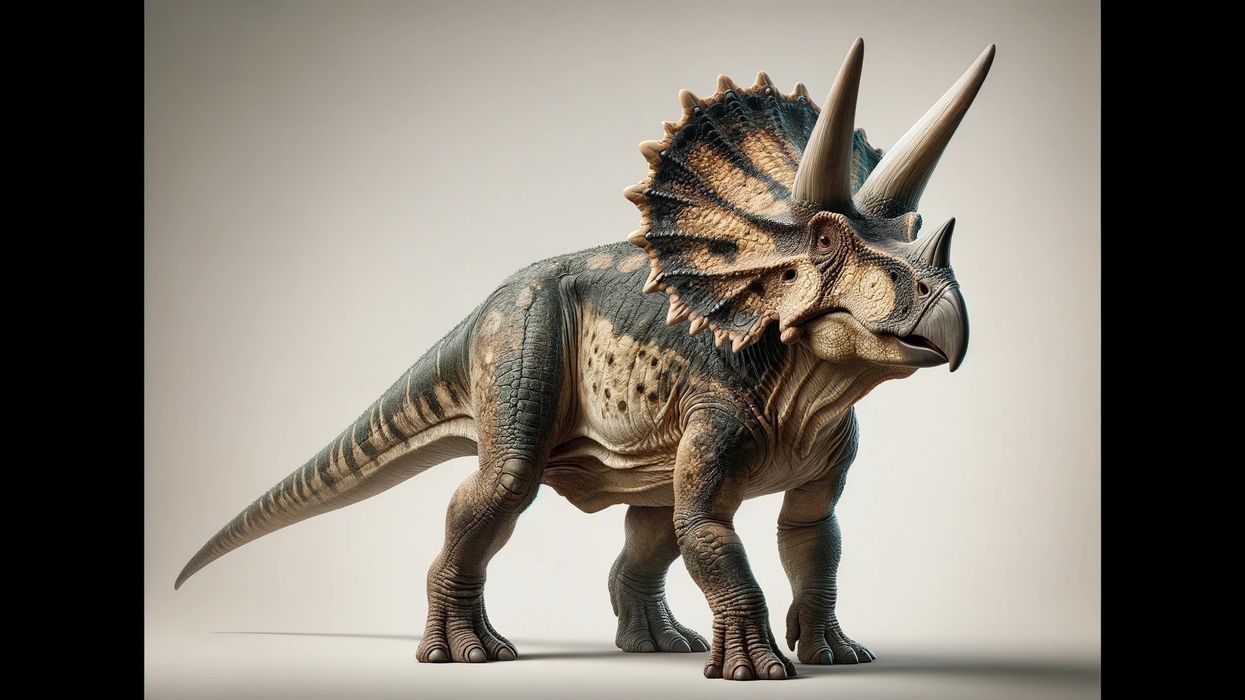The enigmatic Arcusaurus represents a pivotal discovery within the field of vertebrate paleontology. As a new basal sauropodomorph dinosaur, its fossils provide a window into a time when dinosaurs were flourishing and diversifying into the creatures that would come to dominate the Mesozoic landscape.
The importance of Arcusaurus cannot be overstated; this Early Jurassic inhabitant of modern-day South Africa signifies a transition from the primitive Late Triassic forms (existing about 210 million years ago) to the more advanced and vast sauropodomorphs that later strutted across the prehistoric world.
Unearthed from the upper Elliot Formation, a site renowned for its rich paleontological yields, the fragmentary remains of Arcusaurus have generated both excitement and intrigue.
Renowned paleontologists Adam Yates, Matthew Bonnan, and Johann Neveling played a crucial role in bringing this ancient creature to the limelight.
The fossilized bones of this dinosaur, which notably included remnants of at least two juvenile individuals, provided invaluable evidence for the phylogenetic analysis, inviting both scrutiny and admiration.
These discoveries propelled the understanding of this extinct genus forward and illuminated the intricacies of dinosaur development during a formative period in their evolutionary history.
While a comprehensive understanding of this dinosaur's life remains veiled by the shroud of deep time, Arcusaurus's surviving fossils provoke questions and hypotheses among the scientific community.
The data gleaned from the remains tells of an organism veering towards sauropodomorphs, a nascent lineage of dinosaurs that would eventually give rise to some of the most colossal land animals ever to exist.
Accordingly, it carries within its fossilized fragments a tale of transformation and adaptation, exemplifying the fluid and dynamic nature of evolution during the Early Jurassic Period (201-174 million years ago) in South Africa.
These dinosaurs, though only known from juvenile specimens, underscore the importance of continued paleontological exploration and analysis.
Every bone and tooth excavated from the land colloquially known as the 'Rainbow Nation' imparts a sliver of insight into the diverse and resplendent tapestry of life that once graced the planet.
This dinosaur is not merely a collection of ancient bone and rock; it is a chapter in the grand narrative of Earth's history, a narrative that is continually revised and expanded with each discovery made by dedicated researchers.
Arcusaurus Interesting Facts

How do you pronounce 'Arcusaurus'?
'Arcusaurus' is pronounced as 'Ar-ku-sore-us'.
What type of dinosaur was it?
Arcusaurus was a basal sauropodomorph dinosaur.
In which geological period did this dinosaur roam the Earth?
Arcusaurus inhabited the regions that would become South Africa during the Early Jurassic Period (201-174 million years ago).
When did the Arcusaurus become extinct?
The Arcusaurus inhabited the Earth during the Hettangian to Sinemurian stages of the Early Jurassic Period, and although the exact date of its extinction is not definitive, it is understood to have lived based on geological data from this era.
Where did this dinosaur live?
Arcusaurus once lived within the bounds of what is today the Free State Province of South Africa, specifically in the geologic layers known as the Upper Elliot Formation near Senekal.
What was their habitat?
The specific terrestrial habitat in which Arcusaurus lived in South Africa during the Jurassic period has not been firmly established. Ongoing research may yield more data on its natural environment.
Who did the Arcusaurus live with?
Currently, there is no available information regarding the social interactions of Arcusaurus; continued research is expected to offer insights in the future.
How long did this dinosaur live?
The life expectancy of Arcusaurus remains unknown, but ongoing paleontological studies aim to uncover this detail.
How did they reproduce?

It is presumed that Arcusaurus was oviparous, meaning it likely reproduced by laying eggs.
Arcusaurus Fun Facts
What did they look like?
The appearance of Arcusaurus is largely unknown due to only a partial skull having been discovered; however, ongoing research may uncover more about its physical characteristics.
How many bones did an Arcusaurus have?

The total number of bones in an Arcusaurus's skeleton remains undetermined, as scientists have only recovered fragmentary fossils to date. Future discoveries may help ascertain a more complete skeletal structure.
How did they communicate?
The communication methods of Arcusaurus are currently not known, further research is needed to provide insights into how they might have interacted.
How big was the Arcusaurus?
The exact size of Arcusaurus cannot be determined from the incomplete fossil record; additional findings may reveal more accurate measurements.
How fast could this dinosaur move?
The speed at which Arcusaurus could move is not ascertainable from the available fossils; future discoveries could shed light on its locomotive abilities.
How much did an Arcusaurus weigh?
Due to incomplete skeletal remains, the weight of Arcusaurus remains undetermined, further paleontological research might provide clarity.
What were the male and female names of the species?
There is no specific nomenclature for male and female individuals.
What would you call a baby Arcusaurus?
A baby Arcusaurus would be referred to as a juvenile.
How aggressive were they?
There is currently no available evidence to determine the behavioral patterns or level of aggression in Arcusaurus; additional research may provide further information in the future.
Did You Know...

The Arcusaurus skull presents phylogenetic study challenges, raising doubts and expectations for future discoveries. Arcusaurus implies connections to the more advanced groups included in the detailed cladistic analysis, holding a key that bridges gaps in the understanding of sauropodomorph dinosaurs' evolution.
It is known for its distinctive and detailed features which have captured the interest of paleontologists worldwide.
Although much remains to be discovered about this extinct genus, the partial fossils that have been found, especially the elements of the skull, offer a glimpse into its unique anatomy.
Remarkably, these traits underscore Arcusaurus's role as a transitional species, bridging the Late Triassic forms with the more derived sauropodomorphs that followed.
This dinosaur first captured the attention of the scientific community through its notable presence in the Early Jurassic of South Africa.
This period, known for its evolutionary dynamism, saw the beginnings of significant differentiation in the dinosaur clades.
Its fossils found in the fossil-rich strata of this region not only offer an intriguing look at a formative era for dinosaurs but also highlight the region's contribution to the global understanding of prehistoric life.
In the pursuit of understanding the Arcusaurus, researchers have meticulously analyzed not only the partial skull but also various other bones unearthed from the sediments of South Africa.
These bones, although fragmented, are crucial in piecing together the physiology of this Early Jurassic sauropodomorph.
The Arcusaurus pereirabdalorum holds a critical position in paleontology as the type species of its genus, identified from the burgeoning fossil record.
As the type species, Arcusaurus provides the foundational reference for classifying and studying other sauropodomorph dinosaurs within its genus, serving as a vital benchmark in the intricate tapestry of dinosaur taxonomy.
This designation underscores the importance of this creature in understanding the evolution of early dinosaurs.
The paleontological significance of this dinosaur is further underscored by the discovery of fossils belonging to at least two individuals, providing a rare opportunity for comparative analysis within the species.
This finding allows scientists to explore variations and commonalities in Arcusaurus anatomy, affording a richer understanding of their development and the intraspecific diversity that may have existed during the Early Jurassic Period.
Its fossils have been instrumental in hypothesizing the close relationship they may share with other sauropodomorph dinosaurs.
This connection highlights not only the potential diversity within the Arcusaurus species but also the evolutionary bonds that suggest a common ancestry with their contemporaries.
The primary specimen of Arcusaurus, known as the holotype, was discovered in a disarticulated state, meaning the bones were not connected as they would have been in life.
This specimen includes significant elements such as the nasal bones, postorbital bones near the eye sockets, and the dentary and coronoid bones from the lower jaw, in addition to teeth from the upper jaw, or maxilla.
FAQs
Who discovered it and when?
In 2011, the Arcusaurus received its initial classification and description through the collective work of Adam Yates, Matthew Bonnan, and Johann Neveling.
The primary species, dubbed Arcusaurus pereirabdalorum, was identified based on fossil remnants uncovered in March 2006 at the Spion Kop Heelbo locality within South Africa's renowned Upper Elliot Formation.
Why is this dinosaur significant?
The importance of this dinosaur cannot be understated, given that it exemplifies an early-stage sauropodomorph, shedding light on the beginnings of this dinosaur group's evolution.
The unearthing of this creature contributes to the known variety of Early Jurassic dinosaurs in South Africa and enhances the understanding of sauropodomorphs' progression from two-legged to four-legged gait.
Moreover, its close kinship with Efraasia, despite the considerable lapse in time, hints at a protracted, undocumented evolutionary span for sauropodomorphs, sparking curiosity and debates about their developmental narrative.
What is the difference between this dinosaur and Efraasia?
The distinctions between Arcusaurus and Efraasia lie not only in the different periods they roamed the Earth but also in their physical structures and evolutionary roles among sauropodomorph dinosaurs.
Arcusaurus existed in the Early Hettangian to Sinemurian stages of the Early Jurassic Period, inhabiting the area of present-day South Africa. In contrast, Efraasia dates back to the Norian stage of the Late Triassic Period (about 210 million years ago), with its fossils predominantly found in modern Germany.
Known from partial fossils, including parts of the skull, limbs, and spine, Arcusaurus is predominantly represented by juvenile specimens.
Its anatomy points to it being an early sauropodomorph, possessing distinct traits not seen in closely related dinosaurs, such as its peculiar palatal design featuring a significant oval-shaped cavity and noticeable shelves emanating from the premaxilla bones.
On the other hand, Efraasia is characterized as a moderately built, medium-sized sauropodomorph of about 20-23 ft (6-7 m) in length as a grown specimen.
It displayed elongated fingers and dextrous thumbs, indicative of its ability to grip food, and its wrist structure implies potential quadrupedality, although some experts suggest it might have been strictly bipedal due to the arrangement of its forelimbs.
Arcusaurus and Efraasia, despite their chronological separation, are both identified as foundational sauropodomorphs. Phylogenetic studies suggest Arcusaurus is a sister group to both Efraasia and all the more evolved sauropodomorphs, underscoring their tight evolutionary bond.
This tight evolutionary link, bridging a substantial temporal distance, infers a 35-million-year 'ghost lineage' for sauropodomorphs connecting these two genera.
It indicates a more intricate evolutionary backdrop for sauropodomorphs than was formerly appreciated, hinting at unrecognized diversity and lineage longevity within this dinosaur group.
While this dinosaur possesses fascinating insights into the transitional lineage between earlier and more derived sauropodomorphs, much remains unknown.
This extinct genus captures the imagination of both young minds and seasoned paleontologists. Its name, originating from the Latin word 'arcus', which means 'rainbow', pays homage to South Africa's moniker, the 'Rainbow Nation', and broadens the comprehension of other dinosaurs.
Related Articles Around the Web













